Maverick Life
2021 Sony World Photography Professional Competition: Finalists and shortlist (Part One)
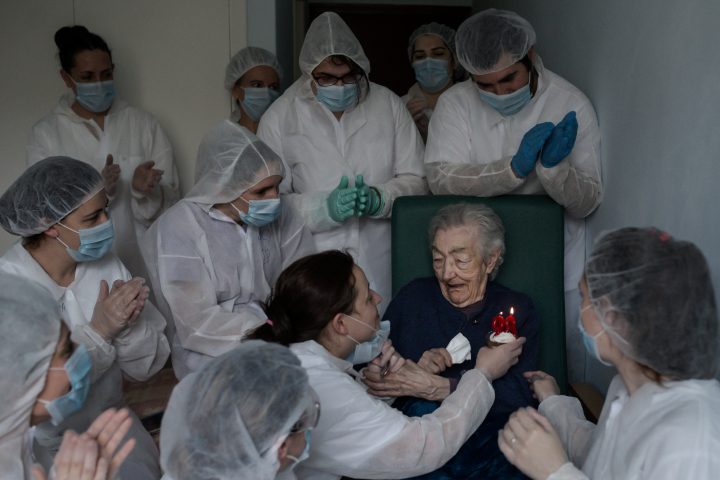
The Sony World Photography Organisation recently announced the finalist and shortlisted photographers in the professional competition for 2021. Here is a selection of the images.
Portfolio category

Several forest firefighters carry out extinction work in a forest fire in Cualedro, Ourense (Galicia, northwestern Spain). Summer of 2020 has become again a distressing summer for Ourense, where fires repeat cyclically in one of the provinces of Europe most affected by the flames. Taken in and around his hometown of Ourense in the region of Galicia, photojournalist Brais Couto presents a series of poignant and dramatic scenes exploring local events and issues ranging from the effects of the pandemic to forest fires and carnival season. © Brais Lorenzo Couto, Spain, Finalist, Professional, Portfolio, 2021 Sony World Photography Awards
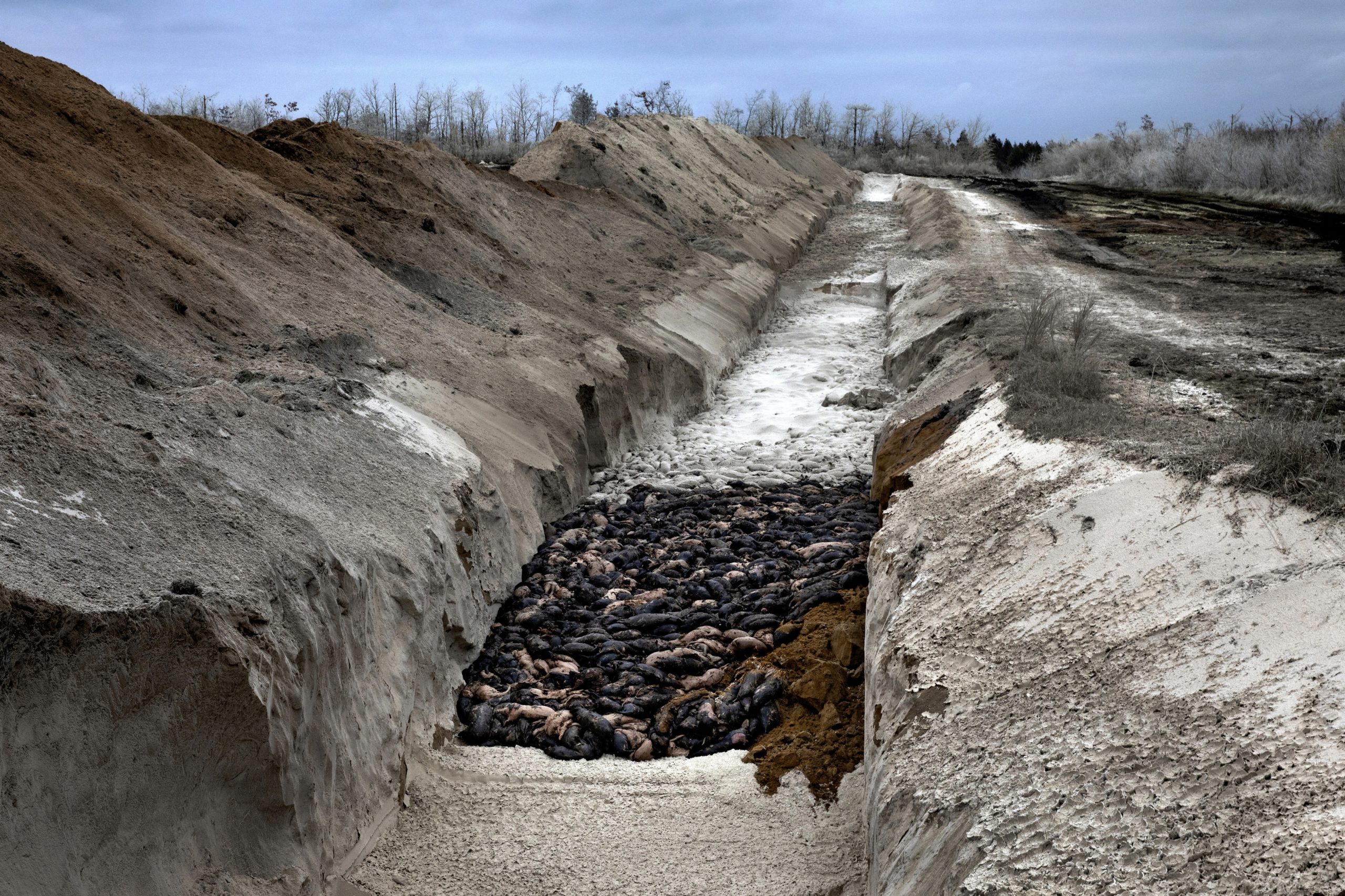
A mink mass grave in Denmark. y portfolio is primarily a mix of pictures from two subjects I focused on throughout 2020. Even though the impact of Covid-19 is not as serious in Denmark as it is in other countries, it is still a story that affects us all. With this in mind I looked for situations that would reflect daily life in Denmark in the shadow of the pandemic. © Jacob Ehrbahn, Denmark, Shortlist, Professional, Portfolio, 2021 Sony World Photography Awards Photo by Jacob Ehrbahn.
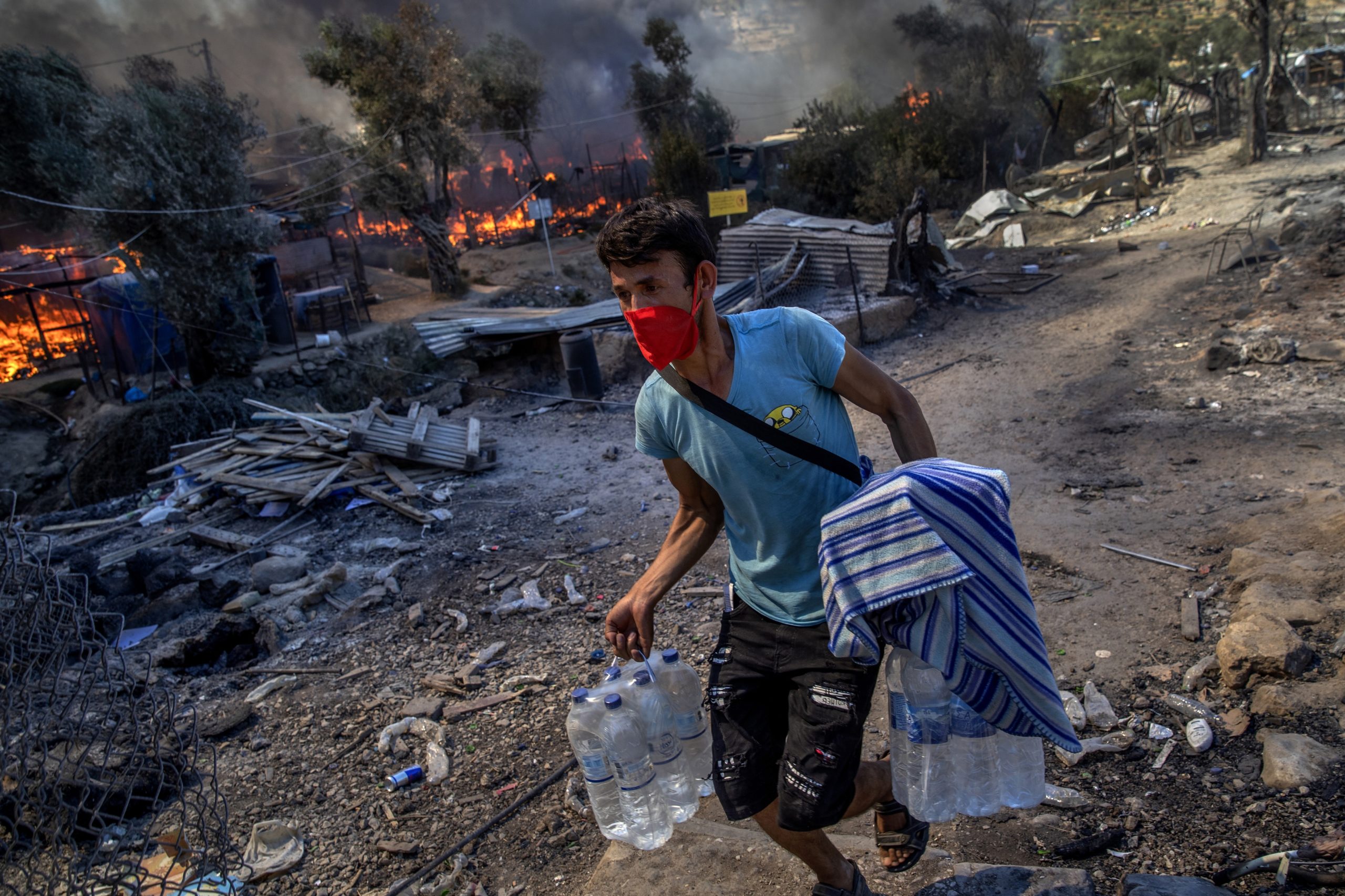
Devastating fire at Europe’s largest camp for refugees and migrants. My portfolio is primarily a mix of pictures from two subjects I focused on throughout 2020. Even though the impact of Covid-19 is not as serious in Denmark as it is in other countries, it is still a story that affects us all. With this in mind I looked for situations that would reflect daily life in Denmark in the shadow of the pandemic. Since spring 2015, I have covered stories of refugees and migrants seeking a better life in Europe. In 2020, I made trips to Turkey, Bosnia-Herzegovina and Lesbos. © Jacob Ehrbahn, Denmark, Shortlist, Professional, Portfolio, 2021 Sony World Photography Awards

The photographs here form part of a larger series of between 20 and 150 images. In my work, it is important to me that the pictures work both as single images and as a series. In all of my pictures, I try to build a bridge – bridges to painting, bridges from analogue to digital. Nothing is just painting or graphics, nothing is just photography. The different genres are interwoven with each other, the points of contact then manifest themselves in surreal picture narratives or parts and flashes of a story. For me, the picture or work of art is my priority. In order to generate this I will not limit myself to a specific genre. © Peter Franck, Germany, Shortlist, Professional, Portfolio, 2021 Sony World Photography Awards
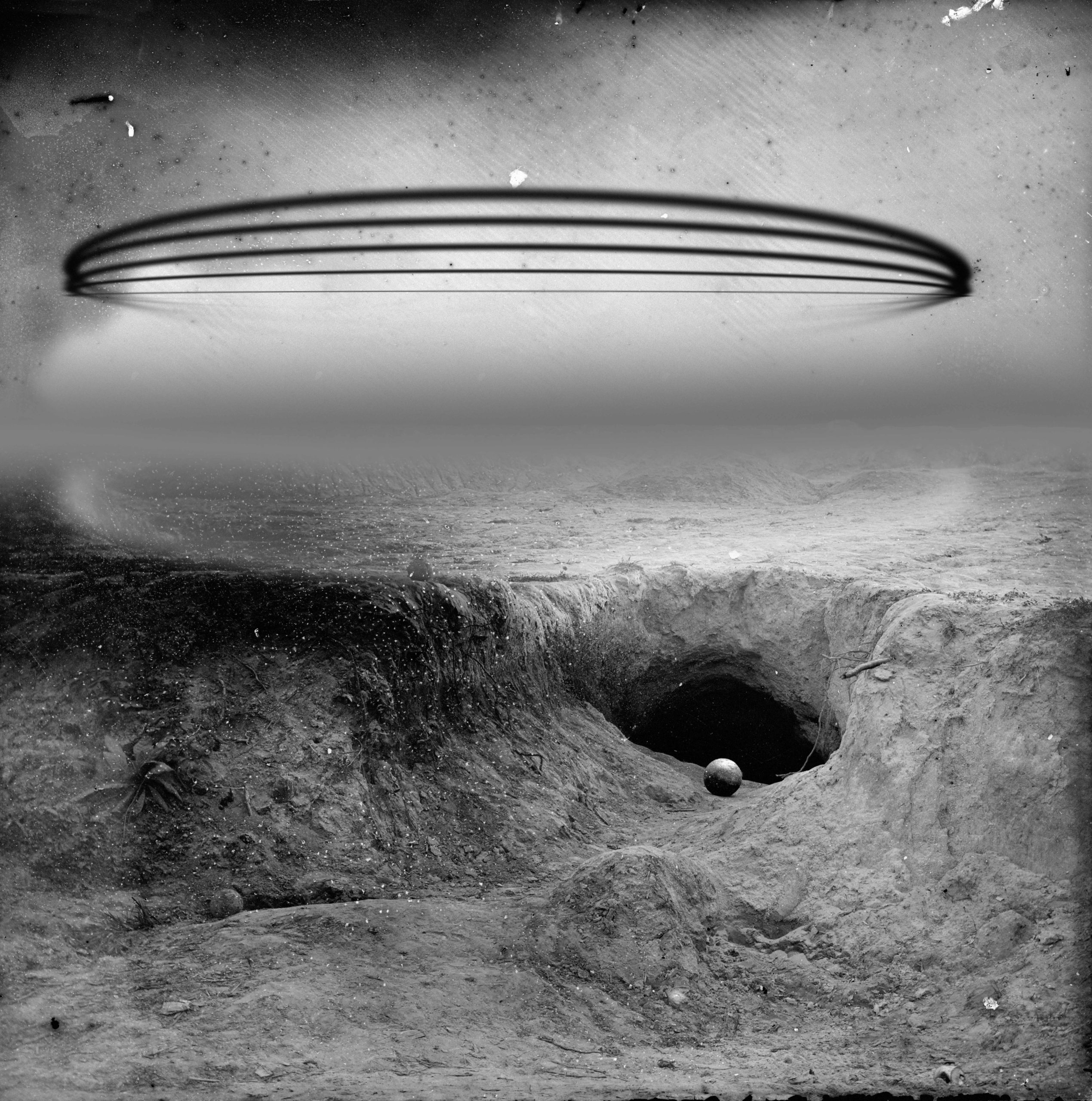
© Peter Franck, Germany, Shortlist, Professional, Portfolio, 2021 Sony World Photography Awards

Ferrara (Italy). In the university’s anechoic chamber – a place where a level of absolute silence can almost be achieved – violinist Martina Monti performs during a recital by the Tasso Middle School. An all-Italian fresco in photographs, with a brief summer trip to nearby Malta. The images tell of scientific research, climate change in agriculture and food delivery bike couriers in Milan; also of Covid-19, social distancing, oxygen production, emergency management and a fascination with life. © Alessandro Gandolfi, Italy, Shortlist, Professional, Portfolio, 2021 Sony World Photography Awards

Italy. Albaredo per San Marco (Sondrio), Eugenia Mazzoni, aged 86, helps out her sons Eugenio and Isidoro in their cowshed. An all-Italian fresco in photographs, with a brief summer trip to nearby Malta. The images tell of scientific research, climate change in agriculture and food delivery bike couriers in Milan; also of Covid-19, social distancing, oxygen production, emergency management and a fascination with life. © Alessandro Gandolfi, Italy, Shortlist, Professional, Portfolio, 2021 Sony World Photography Awards

End Sars Carnival. These photographs represent a vignette of my life and state of mind during the tumultuous year that was 2020. From making my architectural photographs more conceptual to taking self-portraits in lockdown, and photographing Nengi (a finalist in a popular reality TV show), one of the most talked-about people in the country to even documenting the nationwide End Sars protests. 2020 was an interesting year both mentally and professionally for me and this work is a result of my personal growth. © Kayode Moyosade, Nigeria, Shortlist, Professional, Portfolio, 2021 Sony World Photography Awards
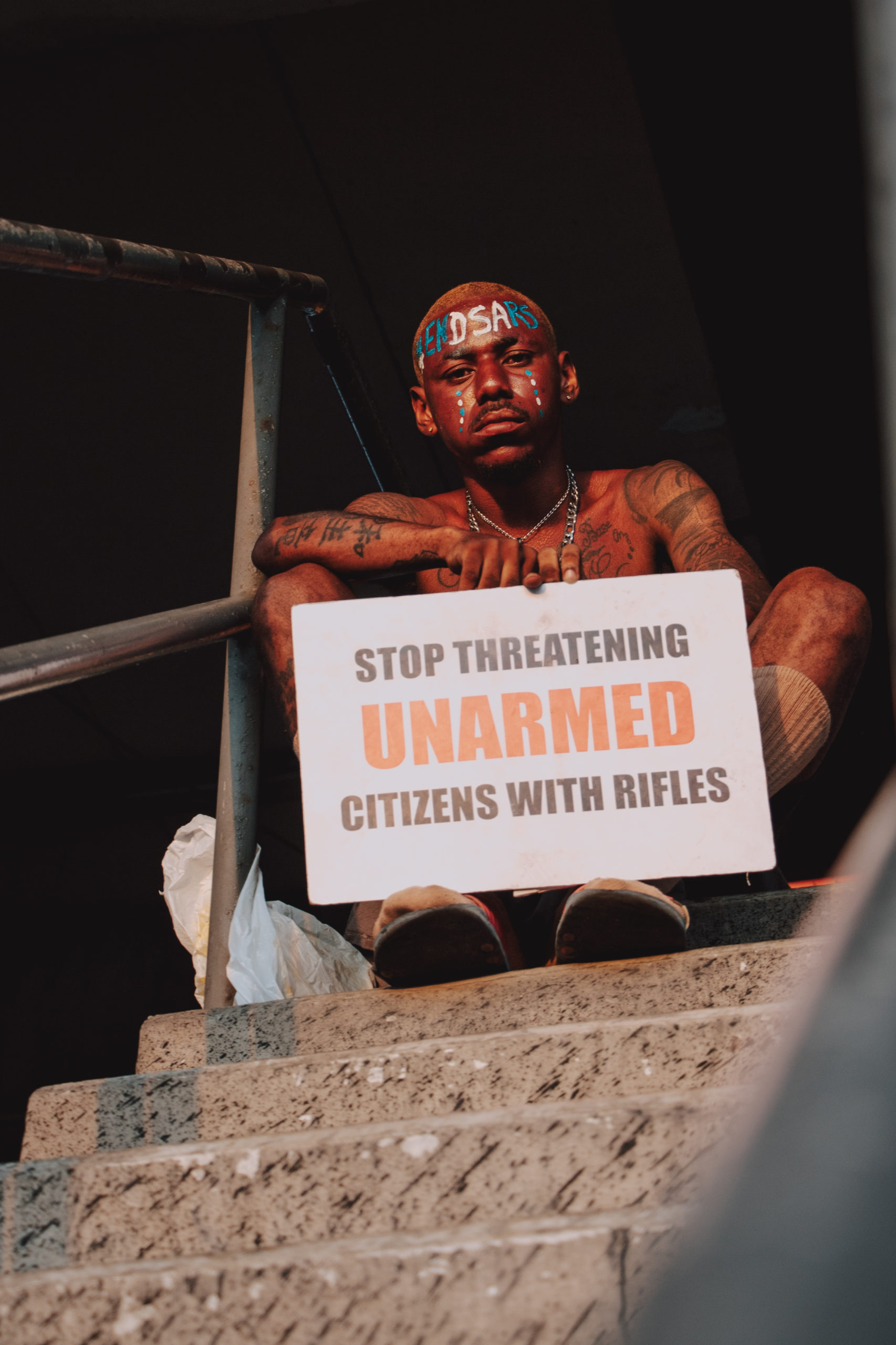
No More Threats, End Sars. © Kayode Moyosade, Nigeria, Shortlist, Professional, Portfolio, 2021 Sony World Photography Awards
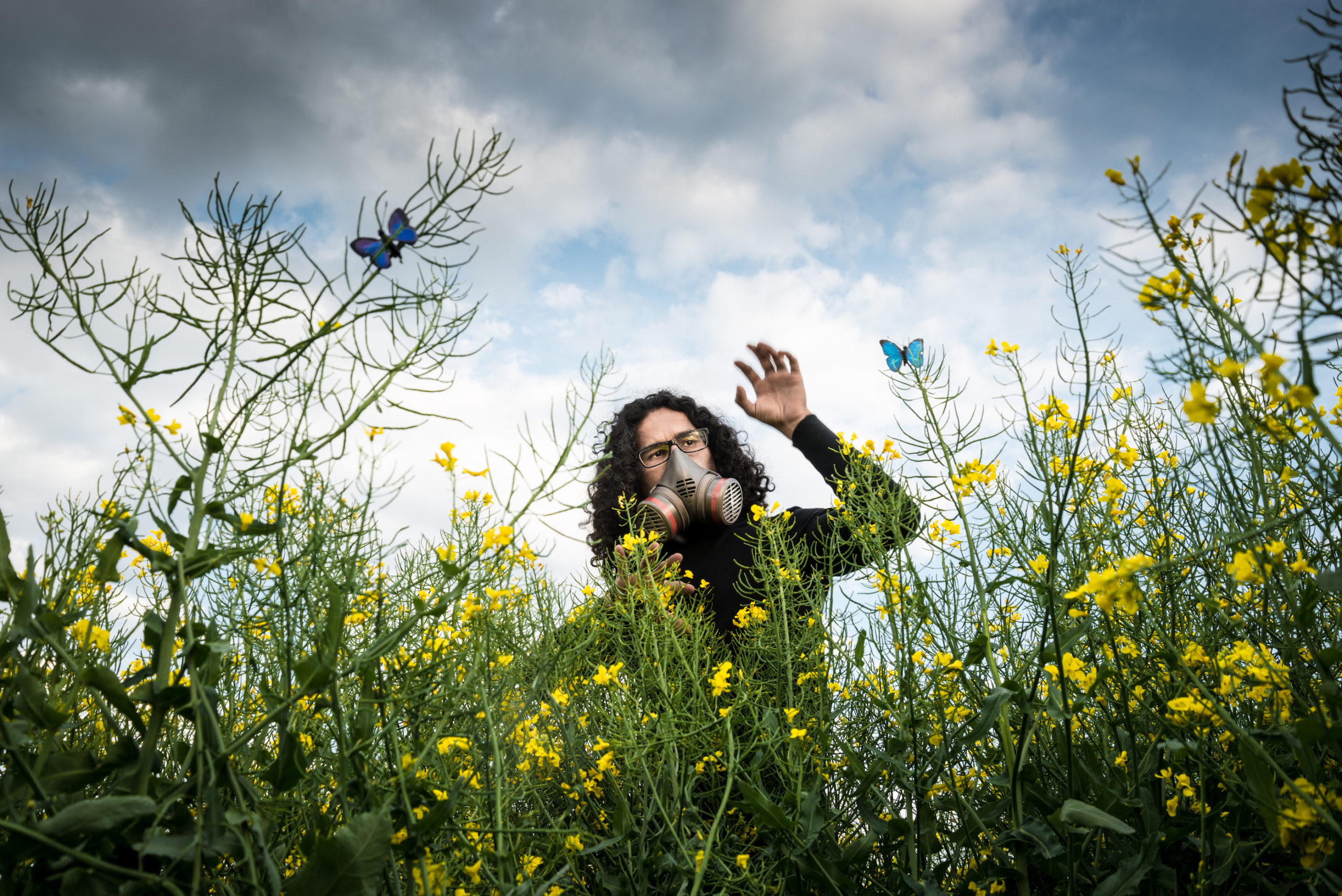
Portrait of the photographer Aun Raza during the lockdown on the Austrian countryside. These images are a collection of contrasting moments. Images staged during the Covid-19 pandemic, a portrait on assignment of a bird trafficker, a strange scene in the streets of Samarkand where naive Christmas imagery and the bravado of soldiers mingle…These images are a diary of the past few months and are linked only by my gaze. © Marylise Vigneau, France, Shortlist, Professional, Portfolio, 2021 Sony World Photography Awards
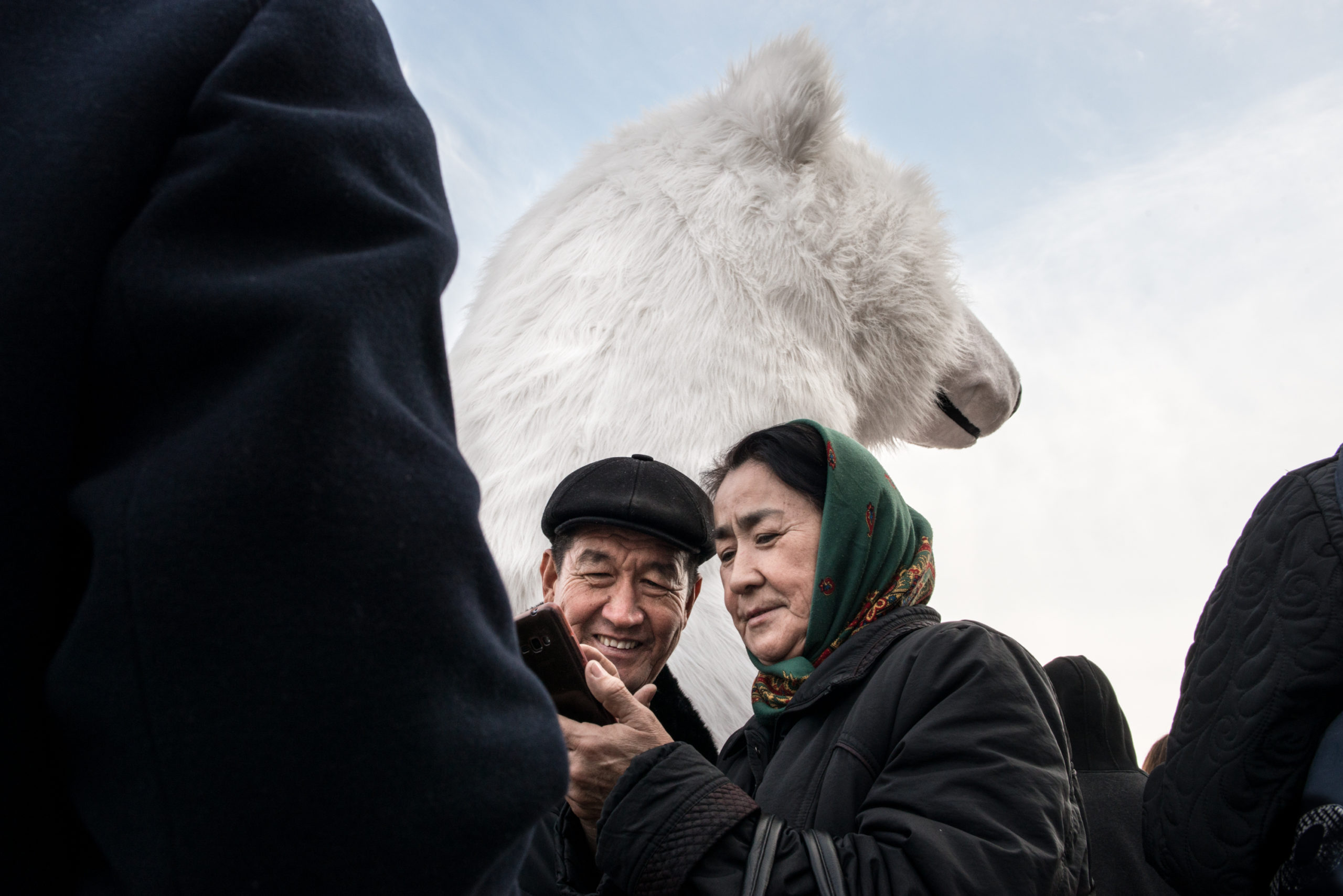
The Guy Behind. © Marylise Vigneau, France, Shortlist, Professional, Portfolio, 2021 Sony World Photography Awards

JAZZ. One of my earliest memories is of sitting on my great-grandmother’s lap. She was blind, and we talked about imaginary worlds. Over time, I realised that for her, my skin colour did not exist. However, the society into which I was born was very different; racism – both subtle and overt – has been part of my life since I was little. There were no black references around me: not in my art or history books, and not on television. Over time, I started to connect my art with my ancestors. My muses’ blindness means not only can they not see me but also they can embrace their blackness in a powerful way. Because being black is beautiful. © (Sergio) (Aparicio) OKOBÉ, Spain, Shortlist, Professional, Portfolio, 2021 Sony World Photography Awards

Pink Dream. © (Sergio) (Aparicio) OKOBÉ, Spain, Shortlist, Professional, Portfolio, 2021 Sony World Photography Awards
***
Documentary category

The pyrethrum is known as the ‘flower of death’ – a nickname that neatly describes this delicate daisy imbued with murderous power. The pyrethrum is cultivated mainly in the hills of Nakuru in Kenya and is the arch-foe of the insect world. When insects encounter the substance they are stunned into paralysis and then die. © Vito Fusco, Italy, Finalist, Professional, Documentary Projects, 2021 Sony World Photography Awards
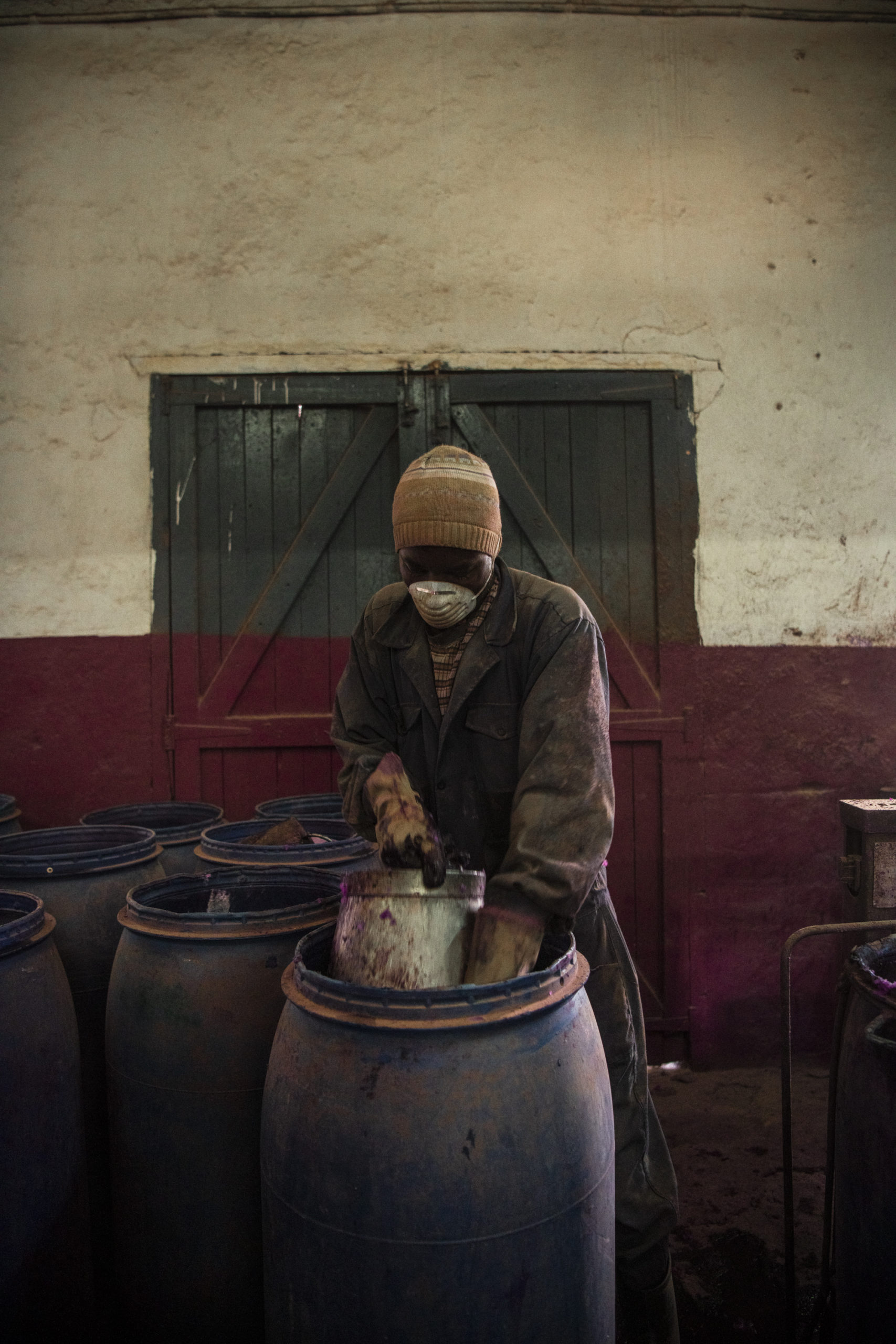
Used for centuries as a natural insecticide, it was only in the mid-20th century that pyrethrum made an impact on the global pesticides market, earning an eminent position among natural insecticides. During the 1980s, the pyrethrum crisis began, instigated by the chemical synthesis of pyrethroids that led to the manufacturing of cheaper but non-organic products. Today, however, this special daisy is being grown once again on the clay hills of Nakuru at an altitude of over 1,500m. The Kenyan government has decided to liberalise the production of pyrethrum, opening it to private companies in an ambitious attempt to revive the sector and help local farmers meet the growing global demand for organic products. Once sown, the plant provides a yield approximately every 15 days, all year round. © Vito Fusco, Italy, Finalist, Professional, Documentary Projects, 2021 Sony World Photography Awards
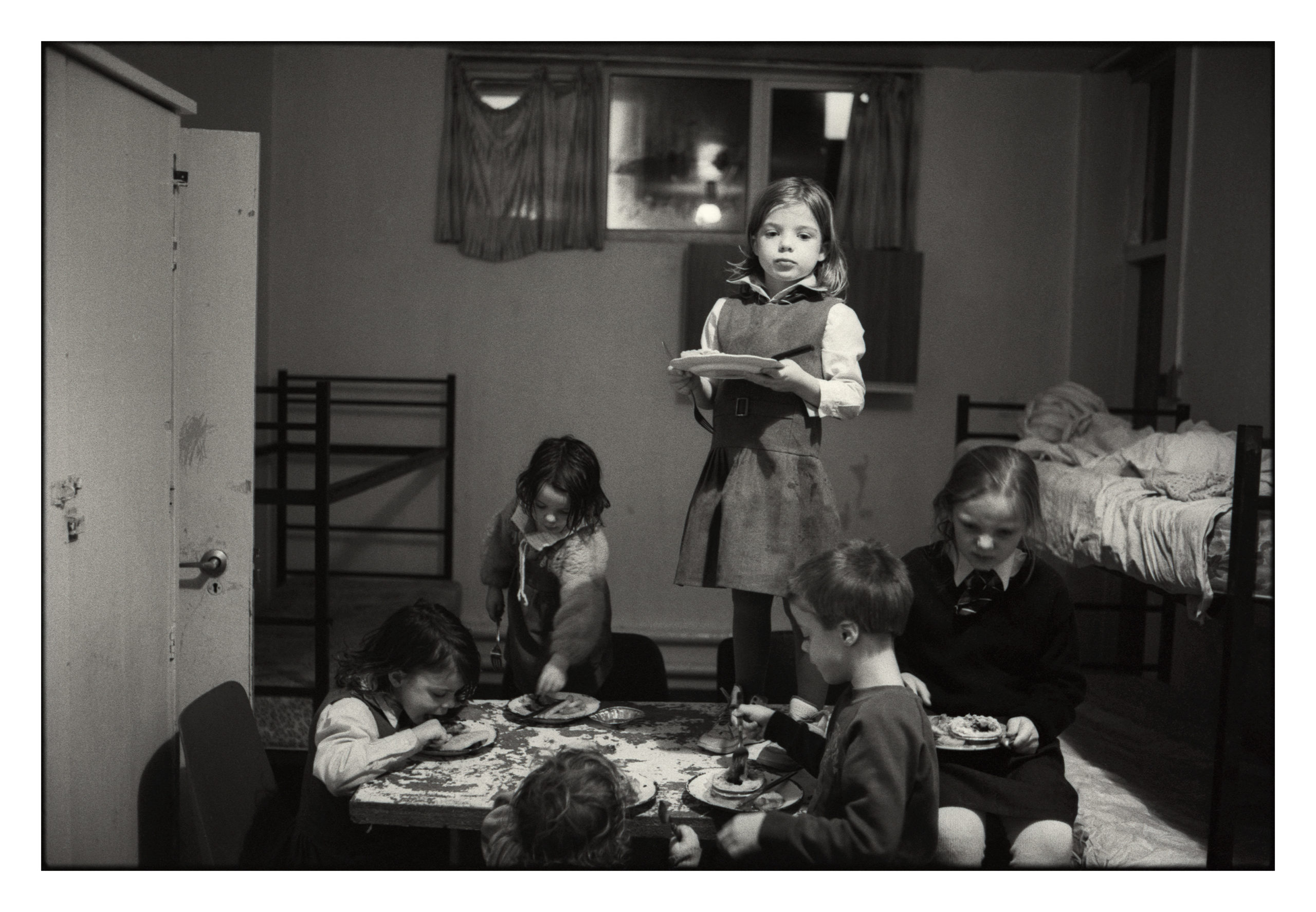
I first met the Williams family in Blackpool in 1992: two parents and six children living in a hostel for homeless families. They were trapped in a cycle of unemployment and poverty. I had long wondered what became of the family; I finally traced them in 2016 and have been working with them ever since. The six children now have almost 30 children between them, almost all living in similar conditions to those in which I found them in 1992. Now, however, they are trapped by zero-hours contracts and ‘in-work poverty’. I see their experience as being illustrative of what happened to a society that was left behind by the social policies implemented in the 1980s and ’90s. © Craig Easton, United Kingdom, Finalist, Professional, Documentary Projects, 2021 Sony World Photography Awards
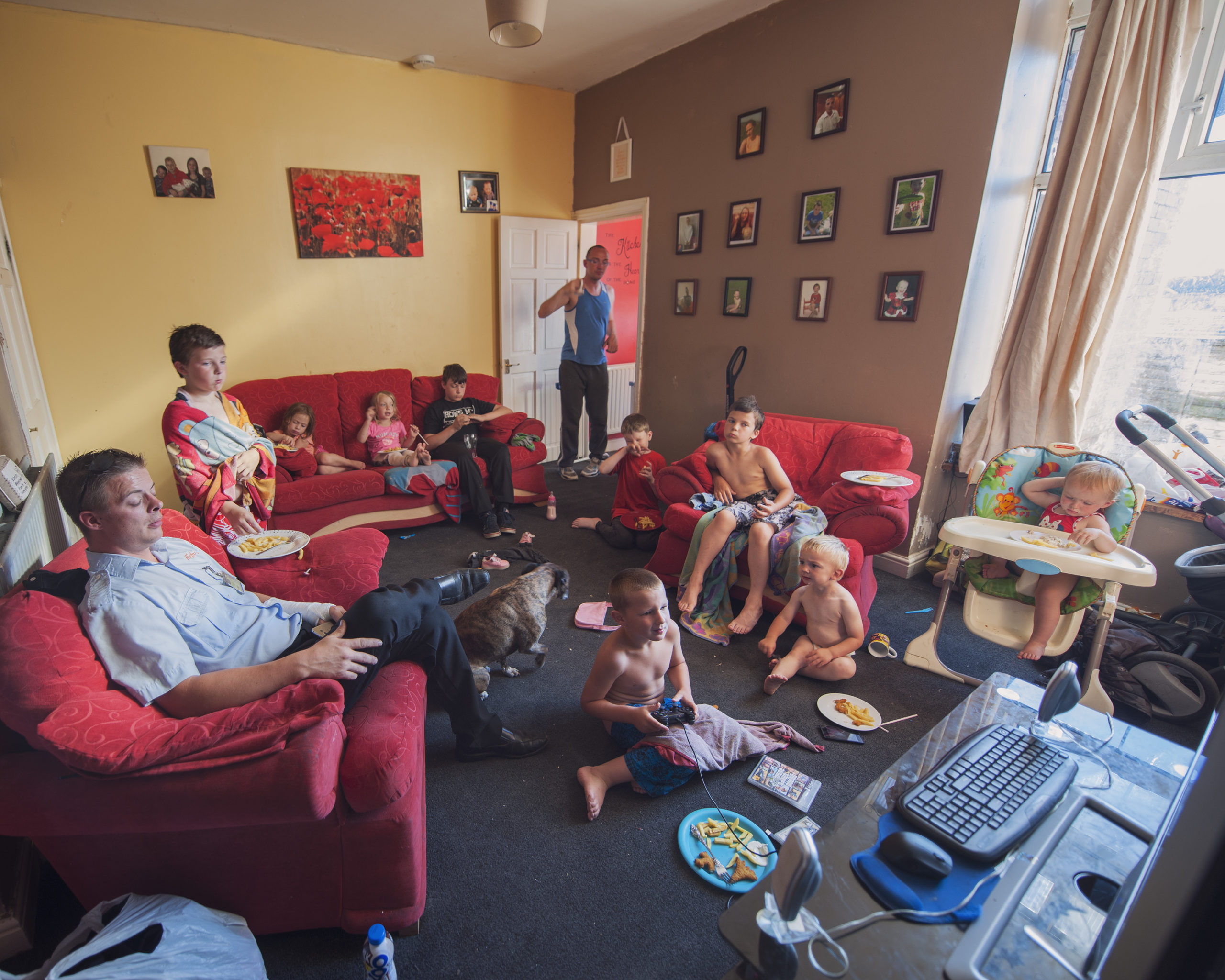
Thatcher’s Children investigates the chronic intergenerational nature of poverty, exploring the effects of successive governments’ social policies as experienced by three generations of one family in the north of England. © Craig Easton, United Kingdom, Finalist, Professional, Documentary Projects, 2021 Sony World Photography Awards
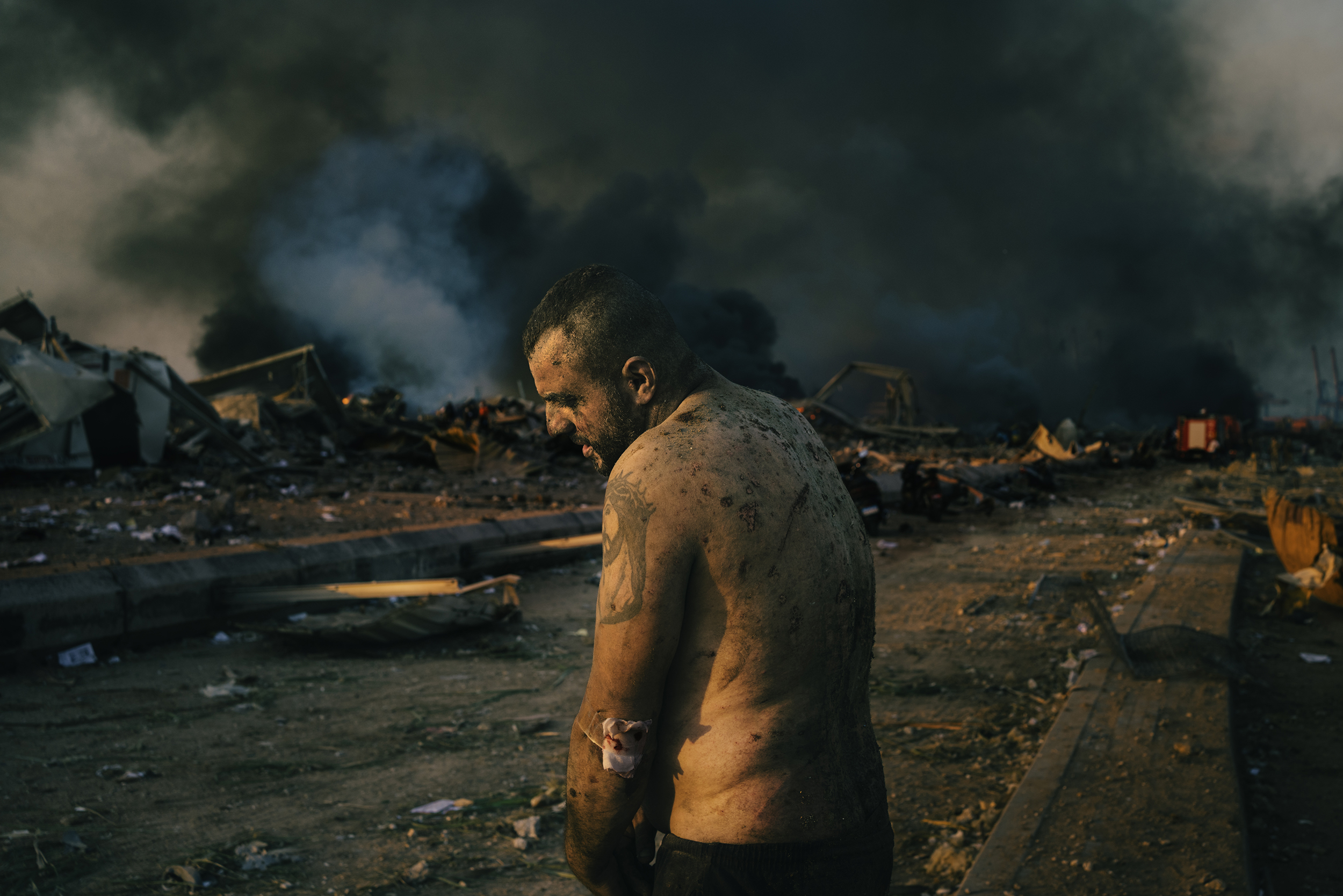
An injured man stands inside the wrecked site of the port of Beirut while firefighters work to put out the fires that engulfed the warehouses after the explosion. A few minutes after 6pm on August 4, 2020, a massive explosion shook Beirut, obliterating its port and destroying swathes of the city. At least 200 people were killed and more than 6,000 injured when 2,750 tons of ammonium nitrate detonated. The material had been stored in a warehouse in Beirut’s port since being seized by custom authorities in 2014, despite repeated warnings of the danger from port officials and its proximity to a densely populated area of the city. In the following days, as bodies continued to be pulled from the rubble, protesters occupied government ministries, set fires and faced off against security forces. © Lorenzo Tugnoli, Italy, Finalist, Professional, Documentary Projects, 2021 Sony World Photography Awards
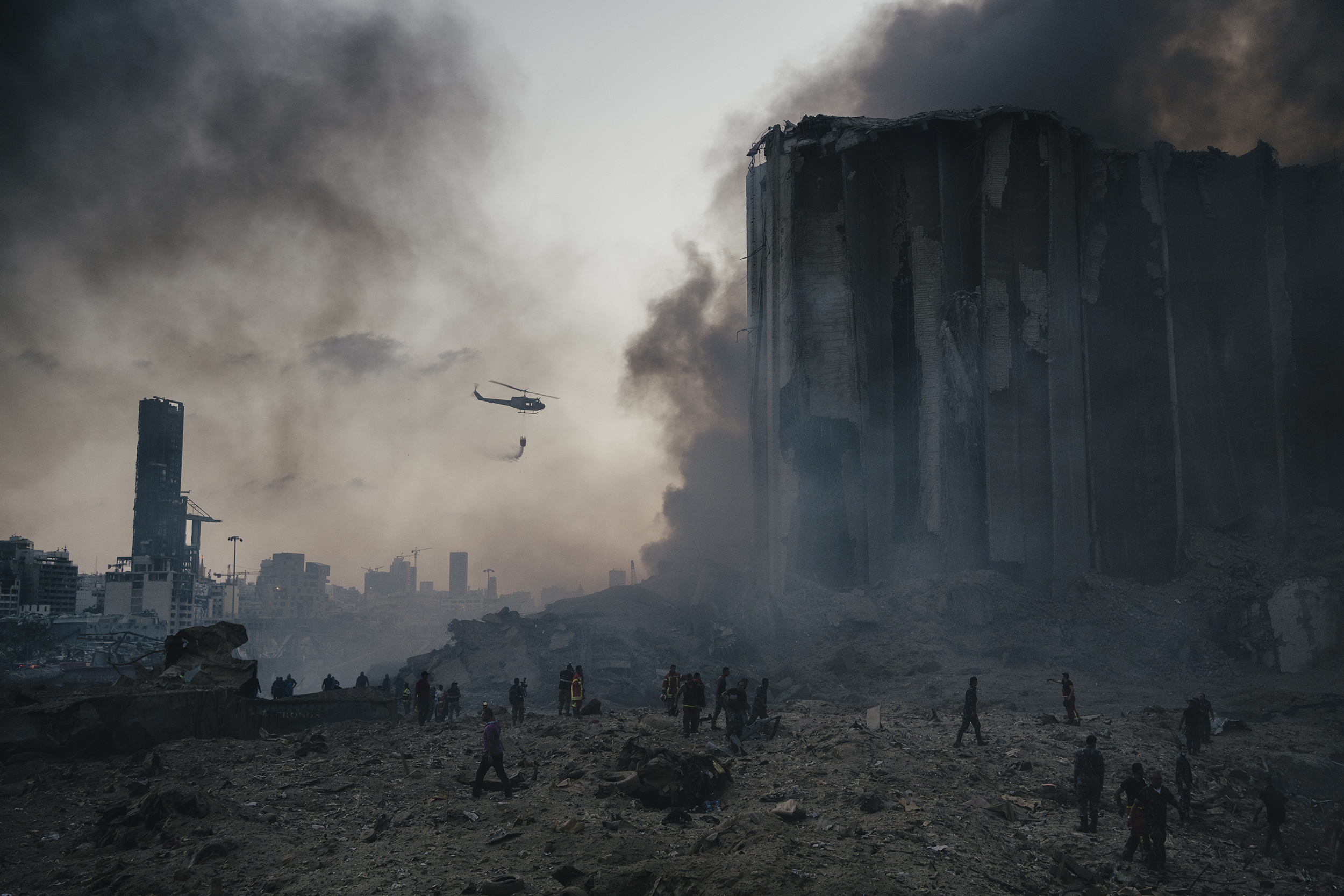
Firefighters work to put out the fires that engulfed the warehouses in the port of Beirut after the explosion. A few minutes after 6pm on August 4, 2020, a massive explosion shook Beirut, obliterating its port and destroying swathes of the city. At least 200 people were killed and more than 6,000 injured when 2,750 tons of ammonium nitrate detonated. The material had been stored in a warehouse in Beirut’s port since being seized by custom authorities in 2014, despite repeated warnings of the danger from port officials and its proximity to a densely populated area of the city. In the following days, as bodies continued to be pulled from the rubble, protesters occupied government ministries, set fires and faced off against security forces. © Lorenzo Tugnoli, Italy, Finalist, Professional, Documentary Projects, 2021 Sony World Photography Awards
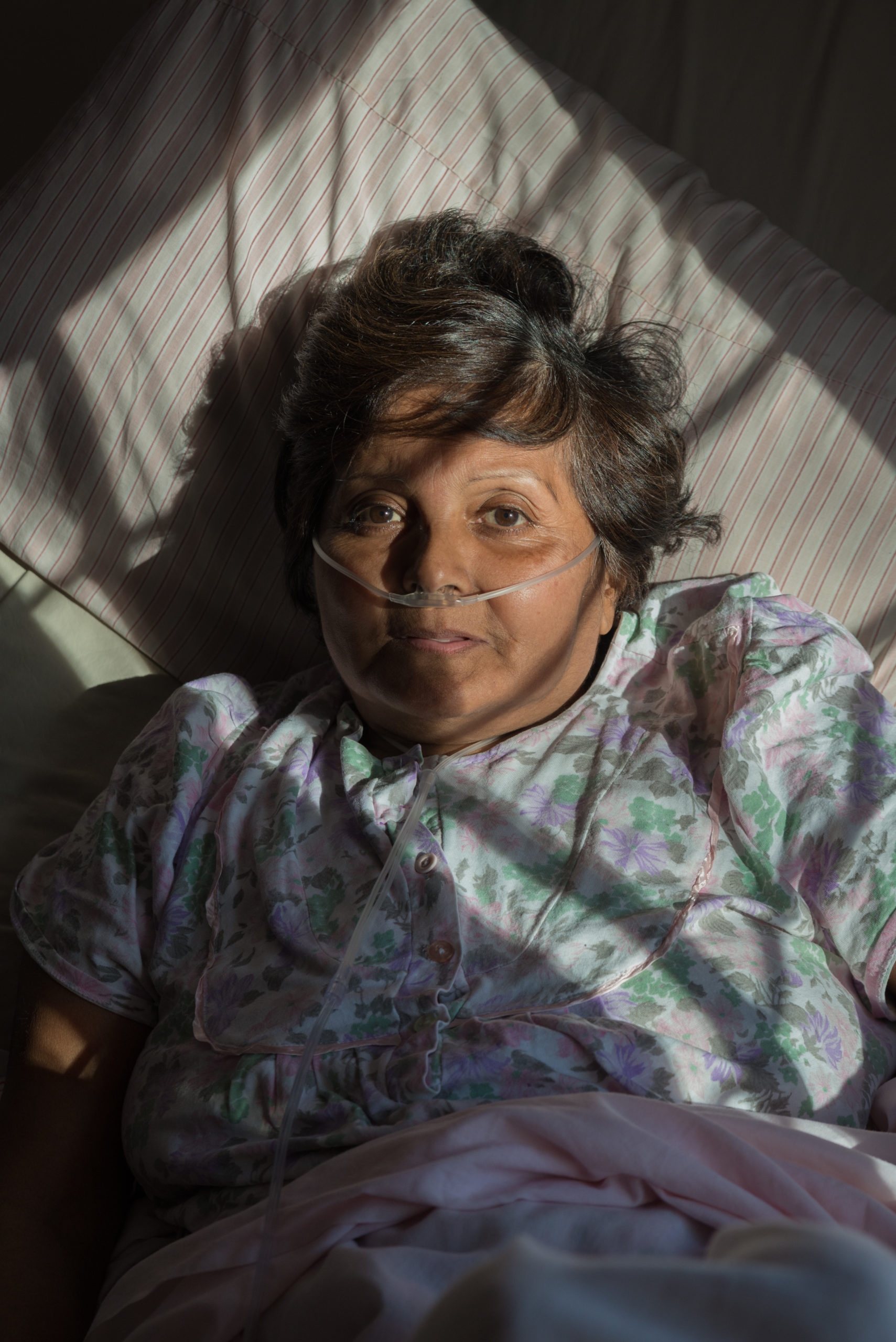
Since its foundation in 2002, the San Camilo Hospice in Argentina has supported more than 2,000 people with life expectancies of less than six months, and their relatives and friends, without discrimination. Inspired by Mother Teresa, it was set up to help those with little money or no family support. Services are free and the hospice is sustained by donations and the work of 200 volunteers. © Marcos Azulay, Argentina, Shortlist, Professional, Documentary Projects, 2021 Sony World Photography Awards

In a culture where we turn our backs on death, and where euthanasia may end up being legalised, places such as San Camilo ensure nobody needs to feel abandoned. I made contact with the hospice in March 2019, aiming to record and share testimonies of people in their last stages of life. A few months later, I started volunteering there. © Marcos Azulay, Argentina, Shortlist, Professional, Documentary Projects, 2021 Sony World Photography Awards
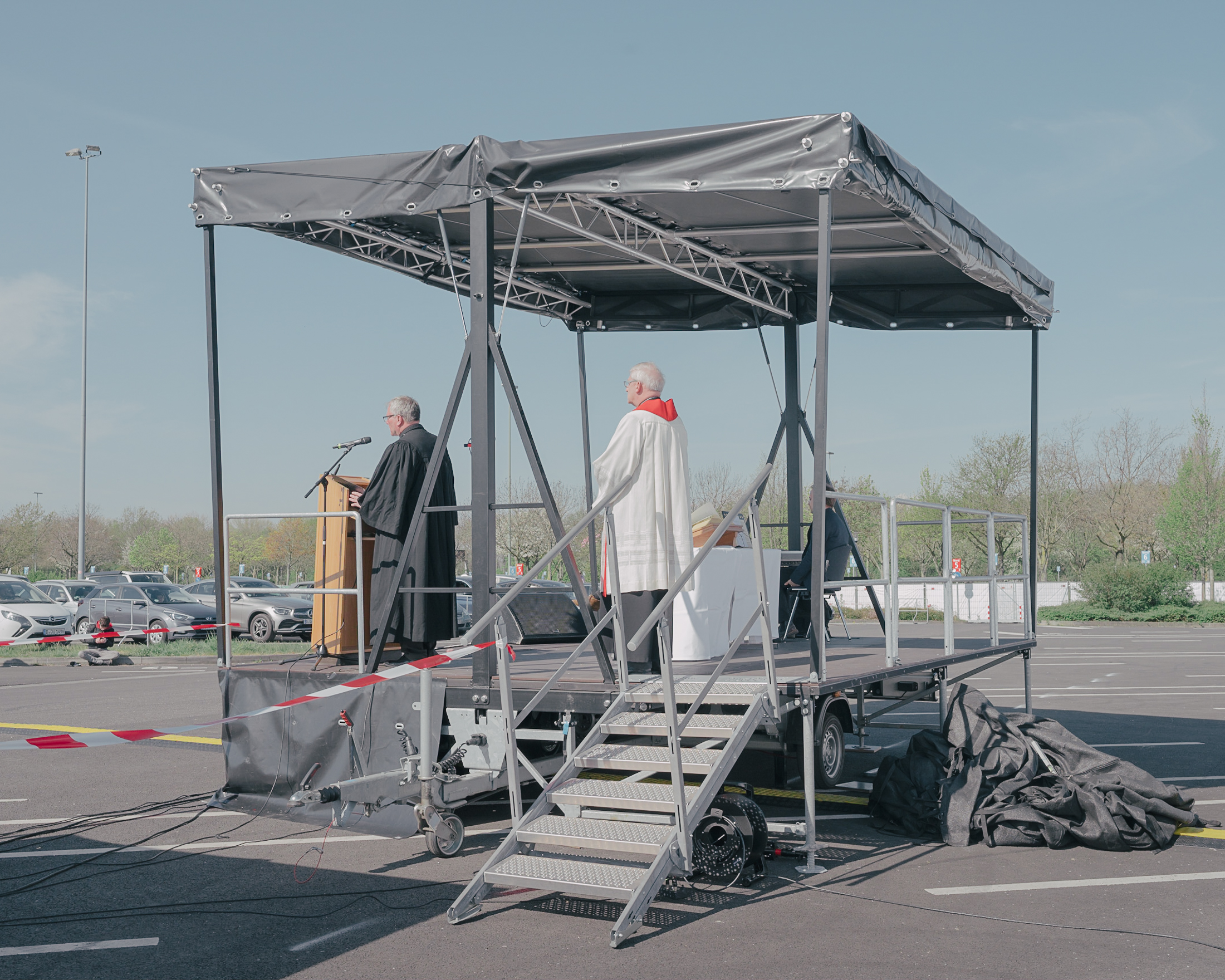
An ecumenical service on Good Friday is held at a drive-in cinema in Düsseldorf, Germany on April 10, 2020. Indoor church services have been prohibited throughout the country since March 16. German Chancellor Angela Merkel spoke out in favour of a ‘measure and middle’ approach to the Covid-19 pandemic. At that point, in February 2020, with fewer than 50 confirmed infections in Germany, large parts of our population did not believe the virus could harm us; we have one of the best healthcare systems and the strongest market economy in Europe. Nevertheless, the virus spread rapidly. The country closed its borders, imposed contact bans and distance regulations. The lockdown began. My project is a journey through Germany during the first wave of Covid-19; it took me 9,000km through the country in order to create a coherent and personal document of the situation. Measure and Middle examines the state of German society – a nation that is often associated with bureaucracy, control and order – during an exceptional time of crisis. © Ingmar Björn Nolting, Germany, Shortlist, Professional, Documentary Projects, 2021 Sony World Photography Awards
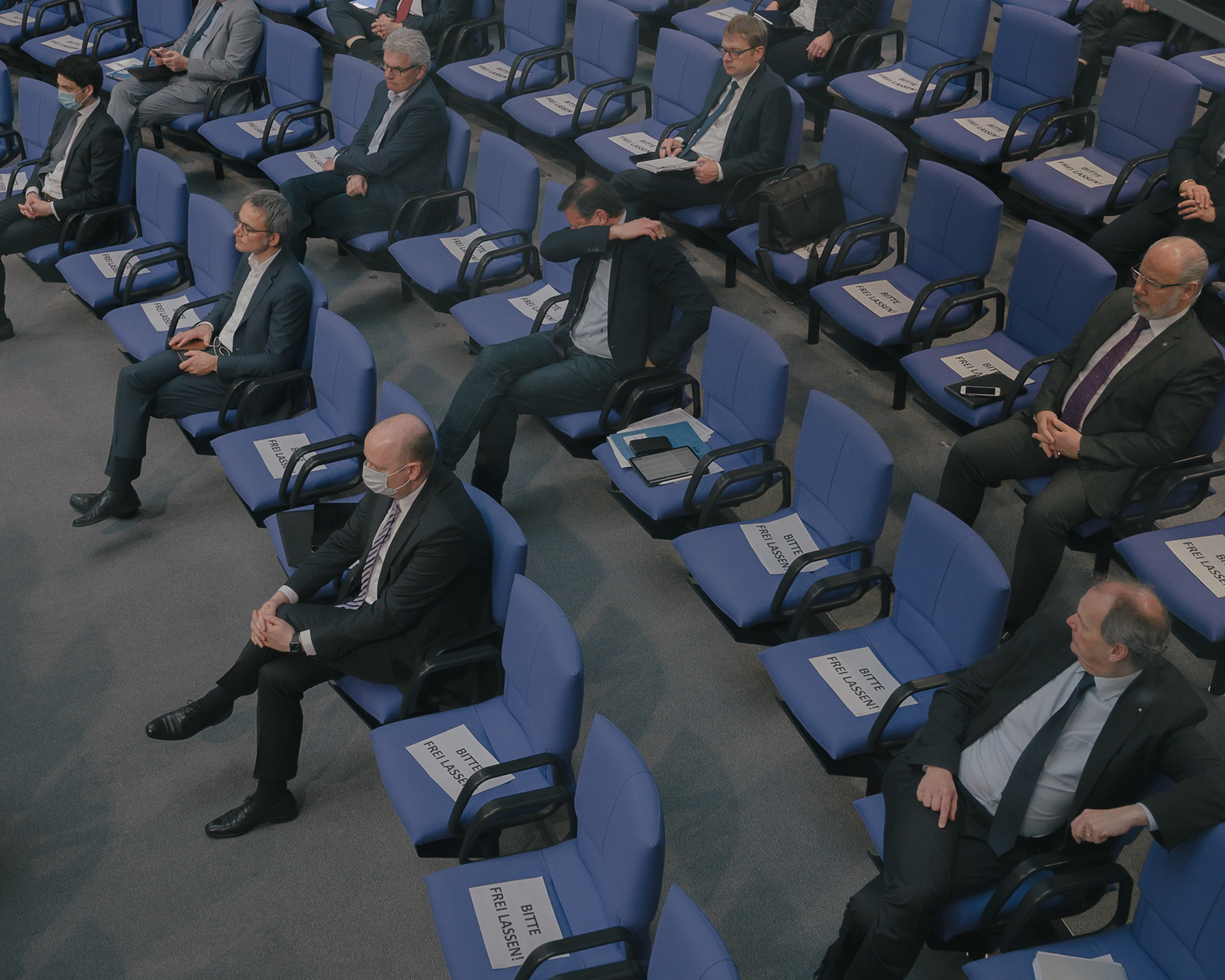
Members of the German Bundestag listening to the speech of Chancellor Angela Merkel in Berlin, Germany, on April 23, 2020. Distance regulations exist for the sessions of the Bundestag. “Nobody wants to hear this, but the truth is that we are not living in the final phase of this pandemic, but at the beginning,” said Angela Merkel. © Ingmar Björn Nolting, Germany, Shortlist, Professional, Documentary Projects, 2021 Sony World Photography Awards
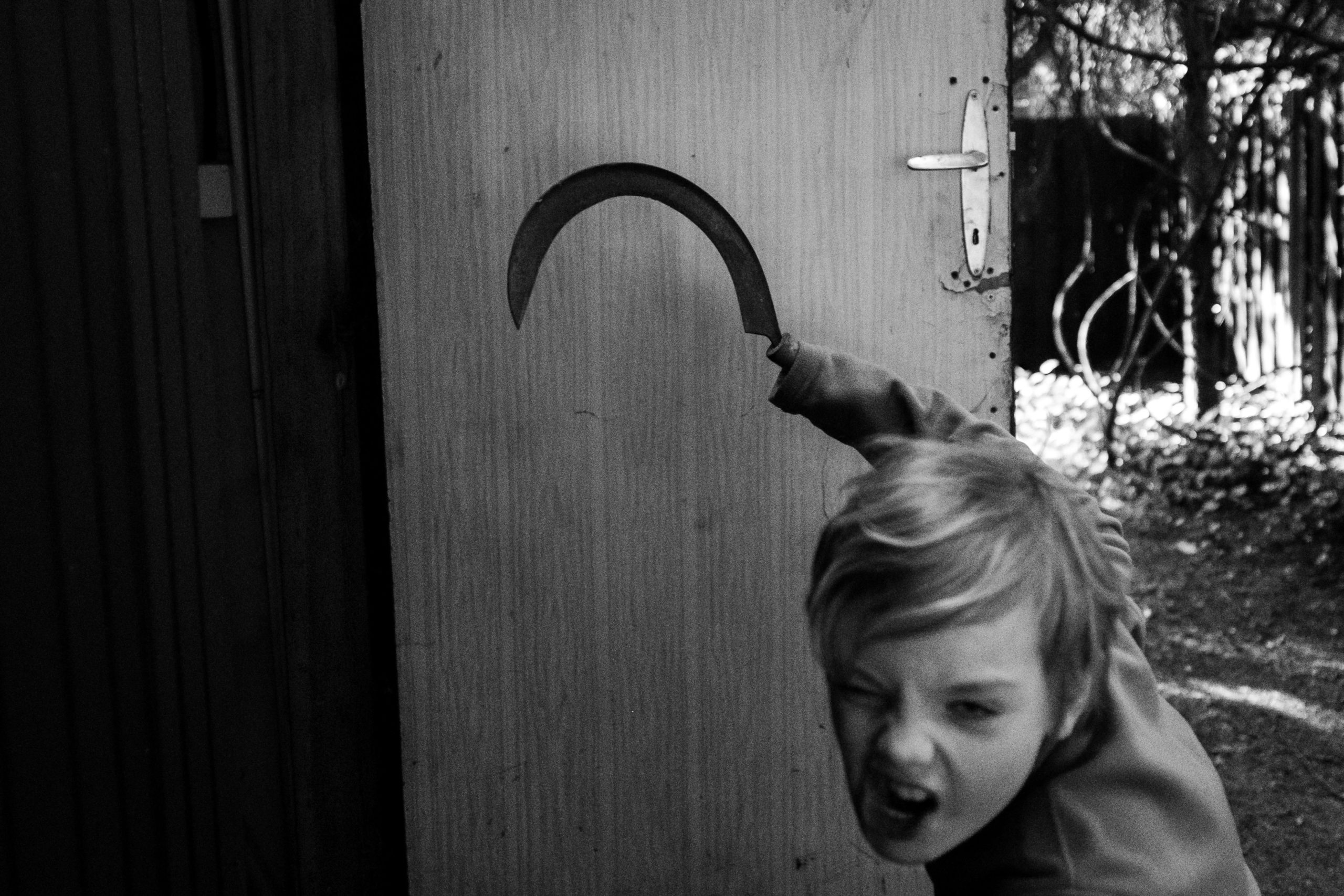
Jan is my only child. During the spring lockdown, he had no direct contact with other kids; his only companions were me and his mother. I’ve been photographing my son while in isolation and have started spotting subtle changes in his behaviour caused by the change of circumstances. The long-term impact of isolation is difficult to foresee at this stage. In November 2020, schools shut down again; children have been learning from home since then. © Agnieszka Maruszczyk, Poland, Shortlist, Professional, Documentary Projects, 2021 Sony World Photography Awards

According to new research, children and young people are likely to experience high rates of depression and anxiety for many years after the coronavirus lockdown ends. A review by a team of experts from the University of Bath concluded that young people who have experienced loneliness throughout the lockdown might be as much as three times more likely to develop depression in the future. © Agnieszka Maruszczyk, Poland, Shortlist, Professional, Documentary Projects, 2021 Sony World Photography Awards
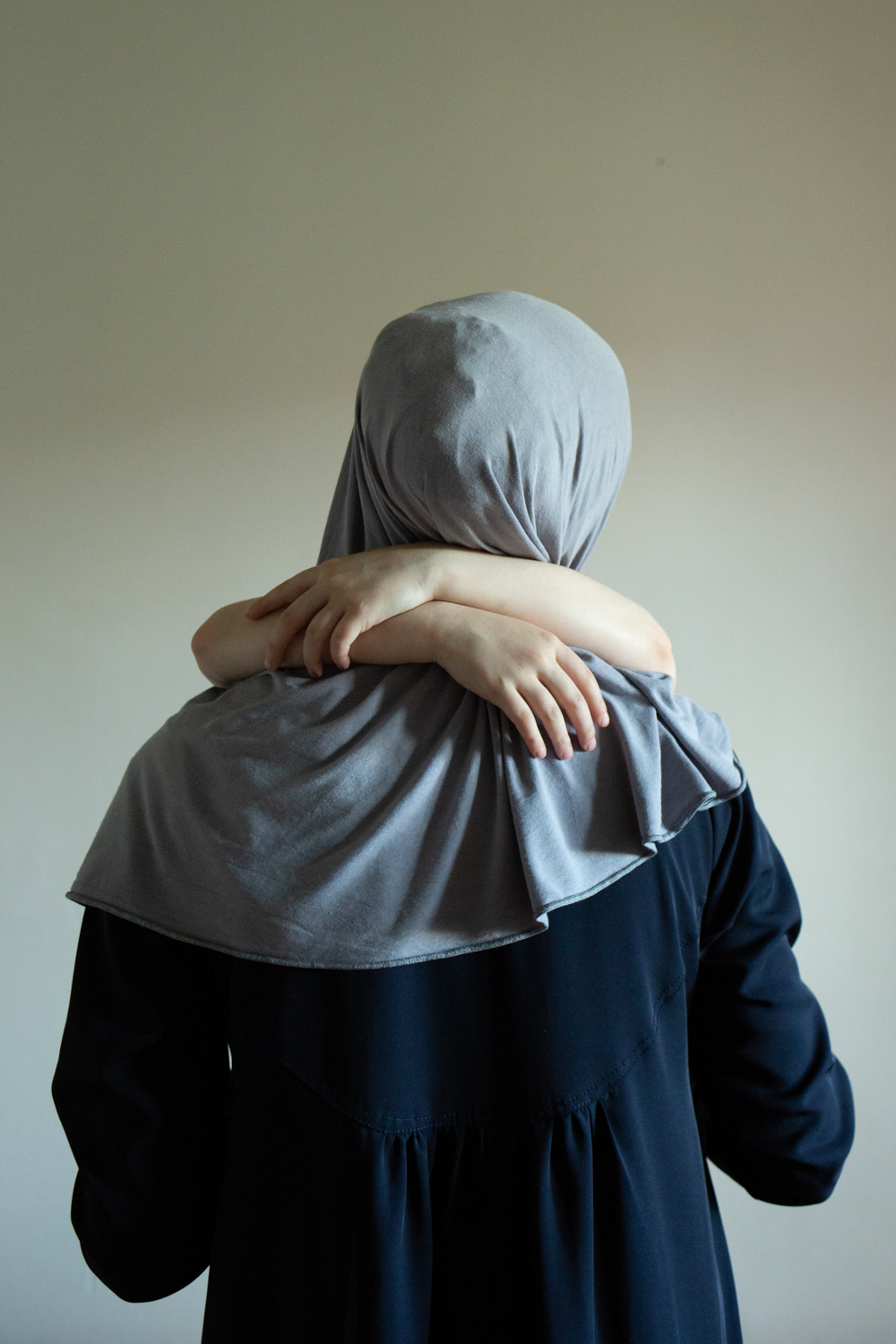
In March 2014, Crimea was annexed by the Russian Federation. The great majority of Crimean Tatars – the indigenous people of the peninsula – did not support the annexation. It is estimated that around 20,000 Crimean Tatars left the peninsula at the time, fearing political or religious repression. A small, religious community of Crimean Tatars found refuge in Drohobych in western Ukraine. In order to preserve their identity, they continue to follow their traditions and customs. © Justyna Górniak, Poland, Shortlist, Professional, Documentary Projects, 2021 Sony World Photography Awards

Haytarma is a traditional Crimean Tatar dance, which can be translated as ‘return’. © Justyna Górniak, Poland, Shortlist, Professional, Documentary Projects, 2021 Sony World Photography Awards
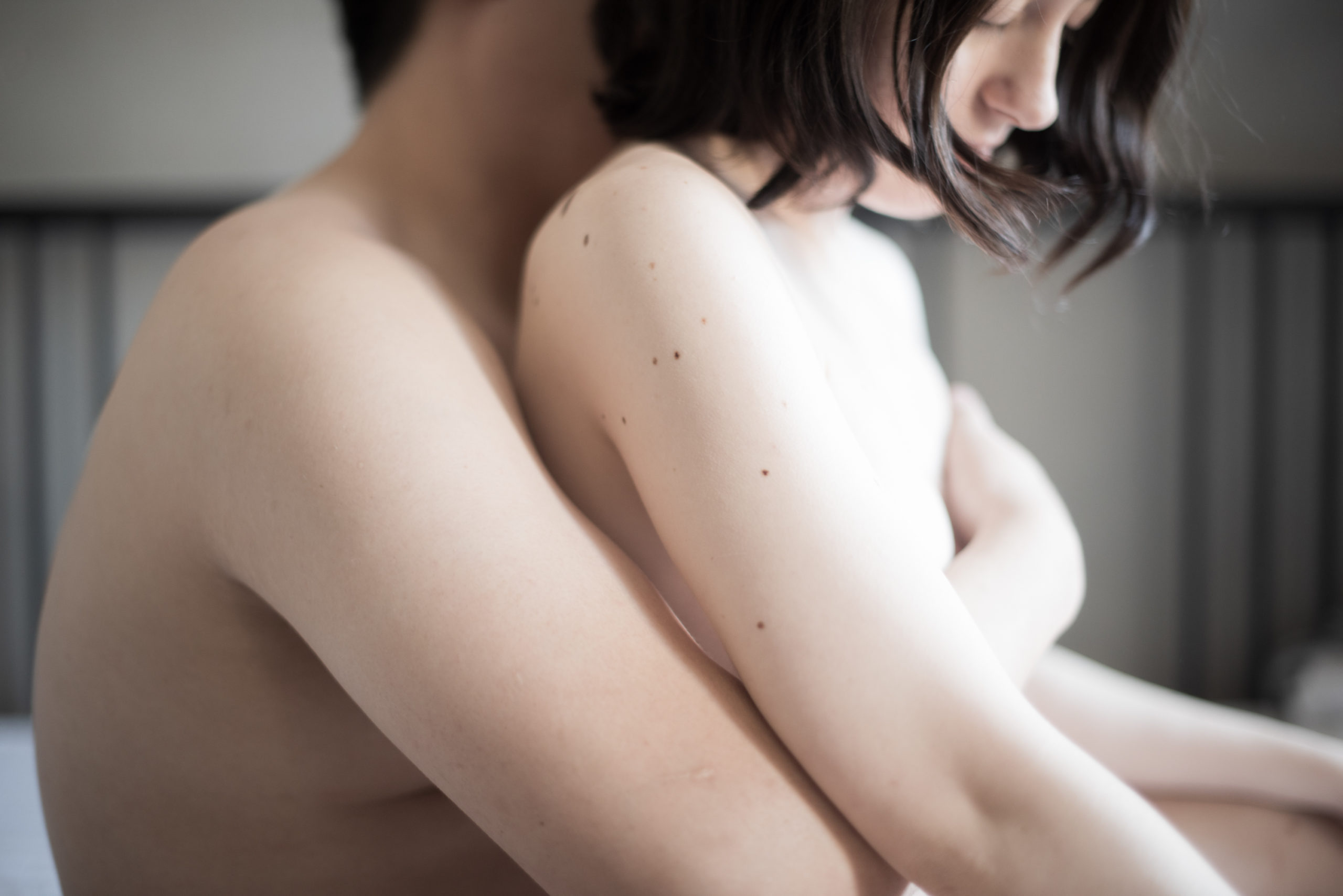
Many of us felt lonely when we suddenly found ourselves in a world dictated by new rules that included no hugging, kissing, or even shaking hands. Since the start of the pandemic, many of my friends and acquaintances ended their relationships. Distance – and, conversely, forced closeness – tests relationships, and not everyone is able to pass. © Alexey Pavlov, Russian Federation, Shortlist, Professional, Documentary Projects, 2021 Sony World Photography Awards
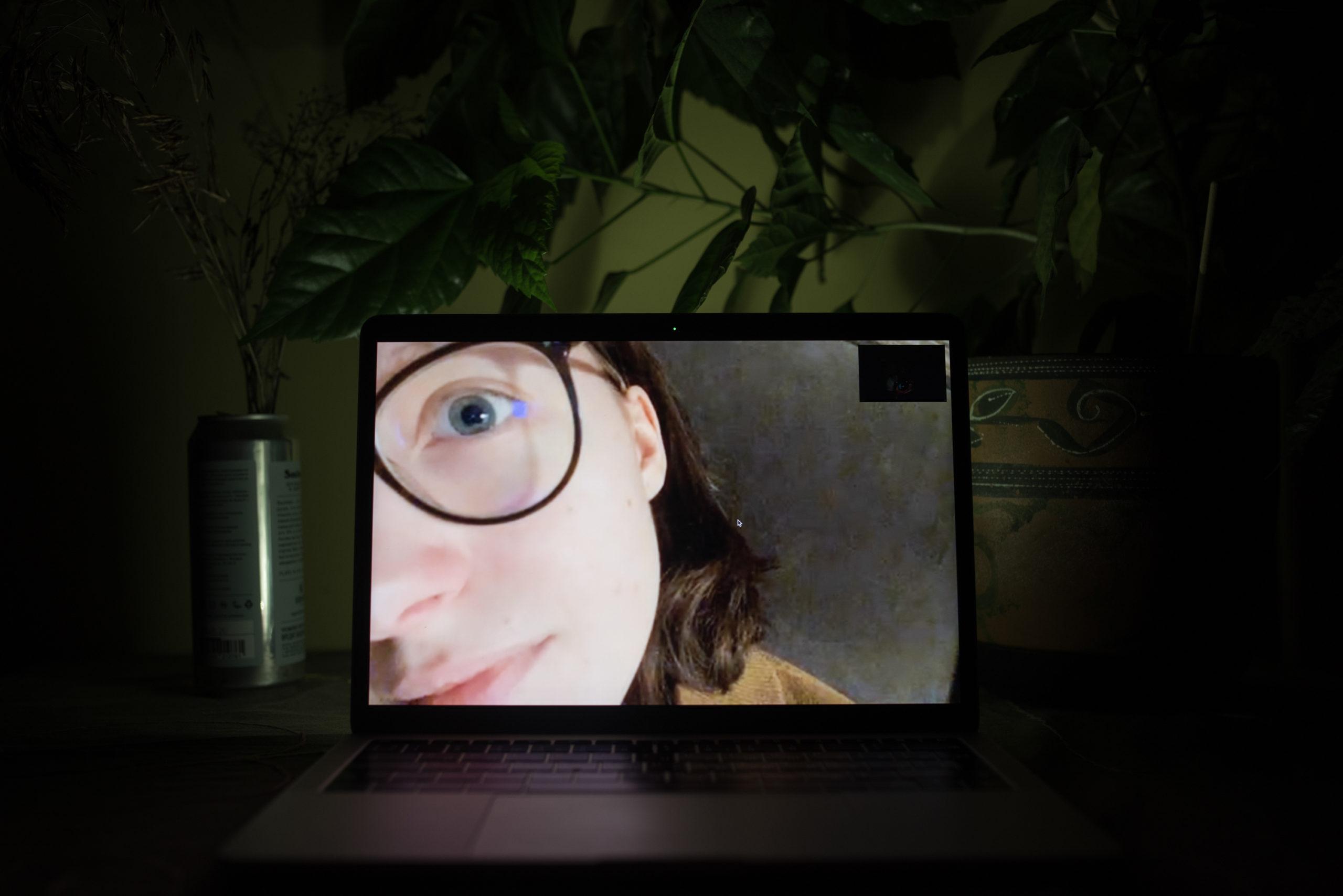
In the midst of this madness, I met Polina online, after writing a couple of silly compliments about her work. For a while, we were able to communicate only online, but when things started to open up, we met and decided we wanted to be together. © Alexey Pavlov, Russian Federation, Shortlist, Professional, Documentary Projects, 2021 Sony World Photography Awards
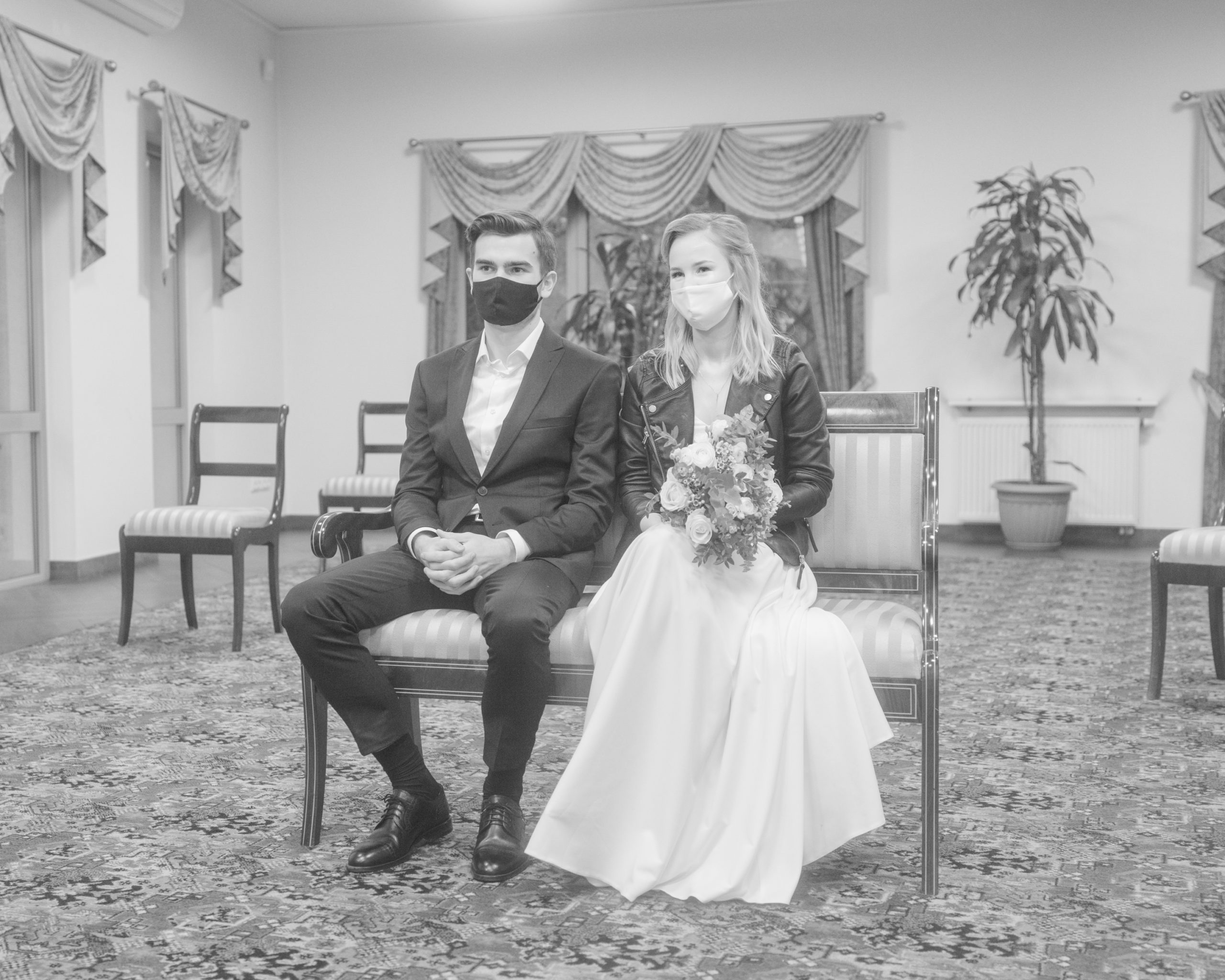
On 11 March, the World Health Organization announced the Covid-19 virus to be a pandemic. From that moment, everyday life in Poland began to change. Firstly, restrictions were introduced to protect people from getting infected. Secondly, fear grew among the population. Places, once full of life, were empty; interpersonal relationships changed. © Tomasz Lazar, Poland, Shortlist, Professional, Documentary Projects, 2021 Sony World Photography Awards
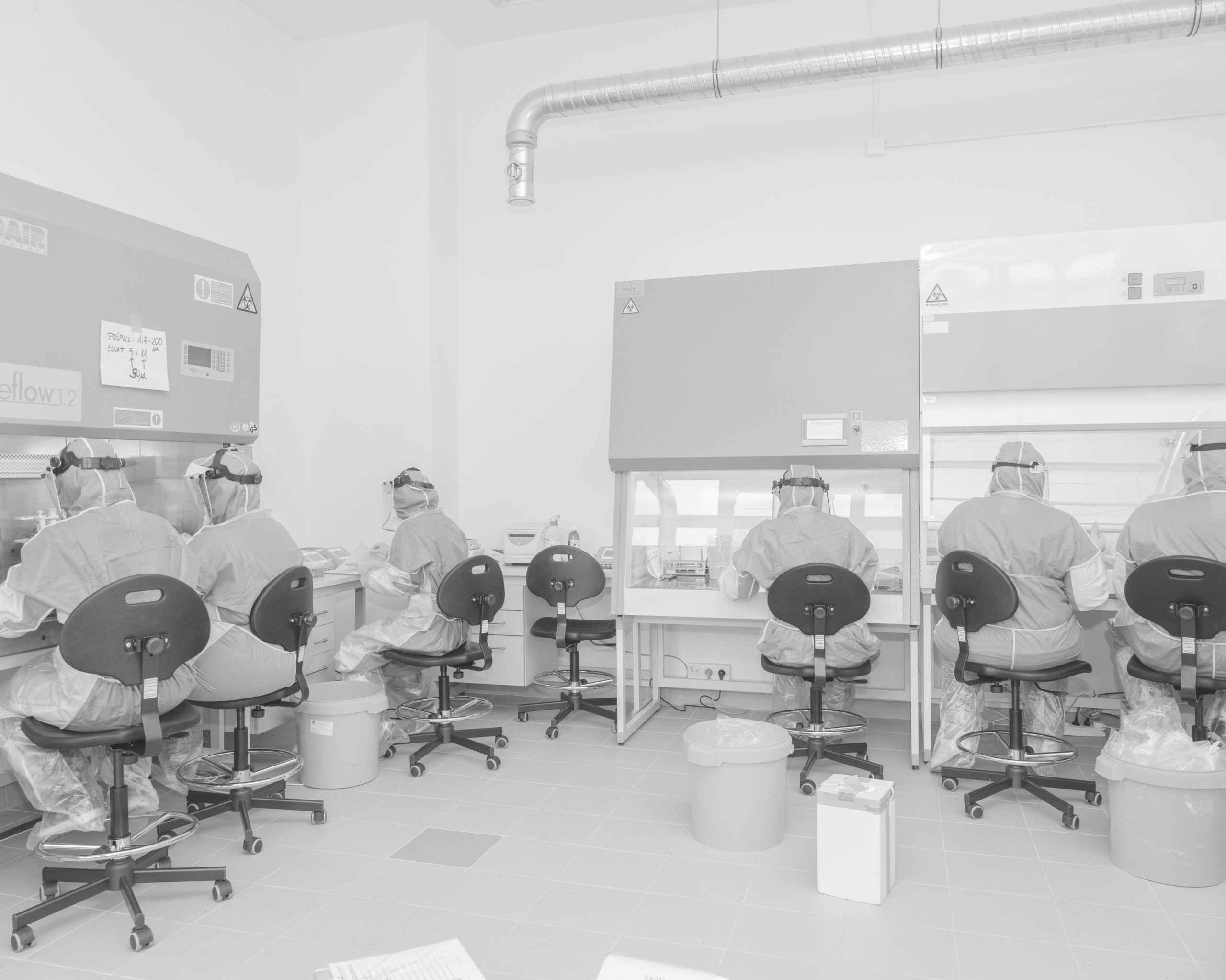
With time, the so-called defrosting of the economy started in Poland. People slowly began to go out into the street, but the feeling of fear remained. The second wave of the pandemic arrived in autumn. Finally, humanity faced a new reality that forced it to leave its comfort zone. The individual was doomed to total isolation. © Tomasz Lazar, Poland, Shortlist, Professional, Documentary Projects, 2021 Sony World Photography Awards
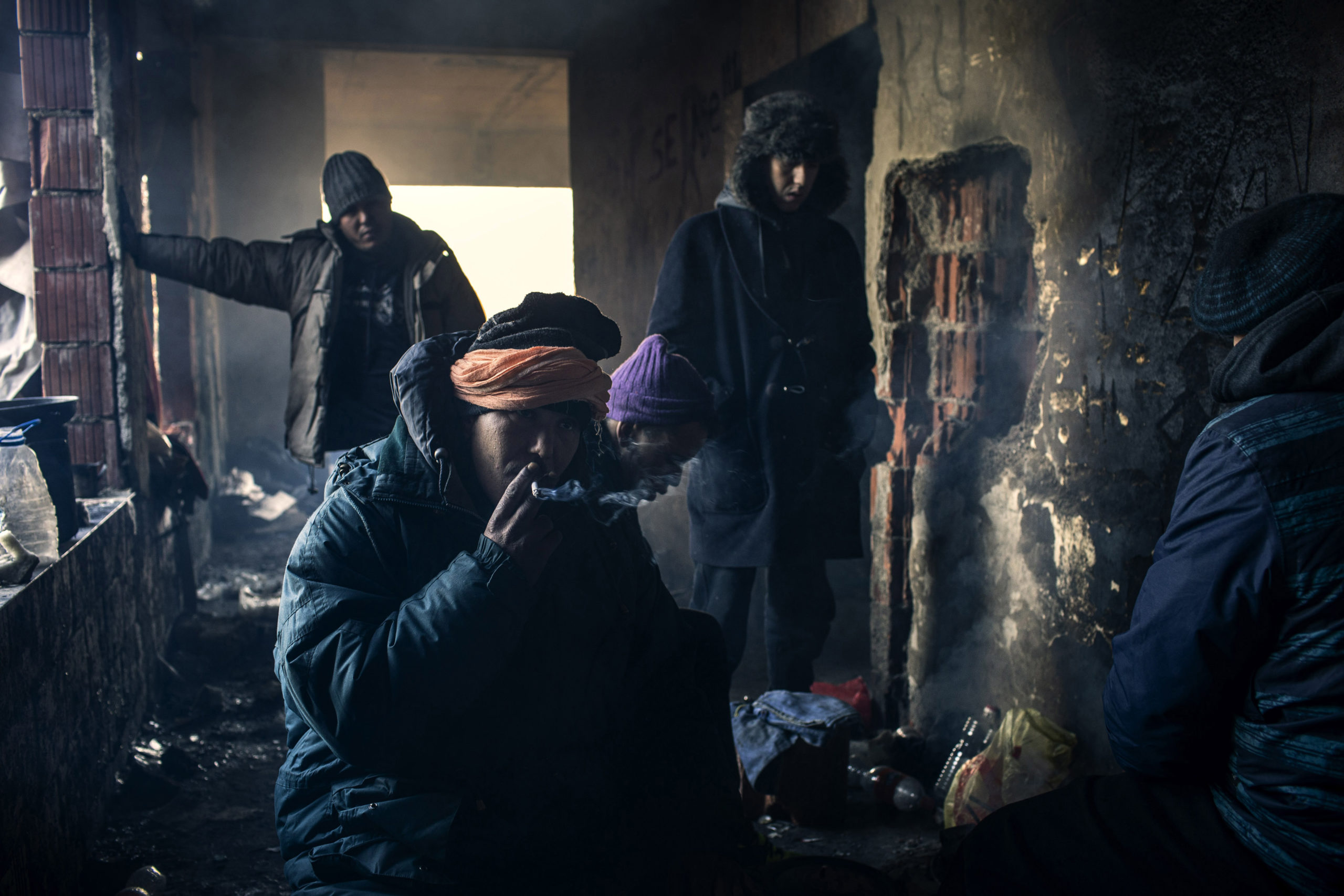
Migrants from Morocco await the moment to cross the border with Croatia inside an abandoned house in Velika Kladusa. Since the closure of the Serbian-Hungarian border to migrants, many have instead chosen to cross from Bosnia into Croatia. However, for many, the dream of a new life turns into a nightmare, and the United Nations High Commissioner for Refugees has called for investigations into reports of violence and excessive use of force. Yet still, every day, dozens of migrants attempt to cross into Croatia from the neighbouring Bosnian city of Bihac, recognisable by their backpacks full of clothes, food and water. The situation worsened over winter, with temperatures reaching minus 15°C, causing the closure of the Vucjak camp, where hundreds of people remained housed in tents. © Jose Manuel Lopez, Spain, Shortlist, Professional, Documentary Projects, 2021 Sony World Photography Awards

Akram, 16, takes a shower inside an abandoned building where he is living together with other Afghans in Bihac. Since the closure of the Serbian-Hungarian border to migrants, many have instead chosen to cross from Bosnia into Croatia. However, for many, the dream of a new life turns into a nightmare, and the United Nations High Commissioner for Refugees has called for investigations into reports of violence and excessive use of force. © Jose Manuel Lopez, Spain, Shortlist, Professional, Documentary Projects, 2021 Sony World Photography Awards DM/ ML


















 Become an Insider
Become an Insider
Comments - Please login in order to comment.